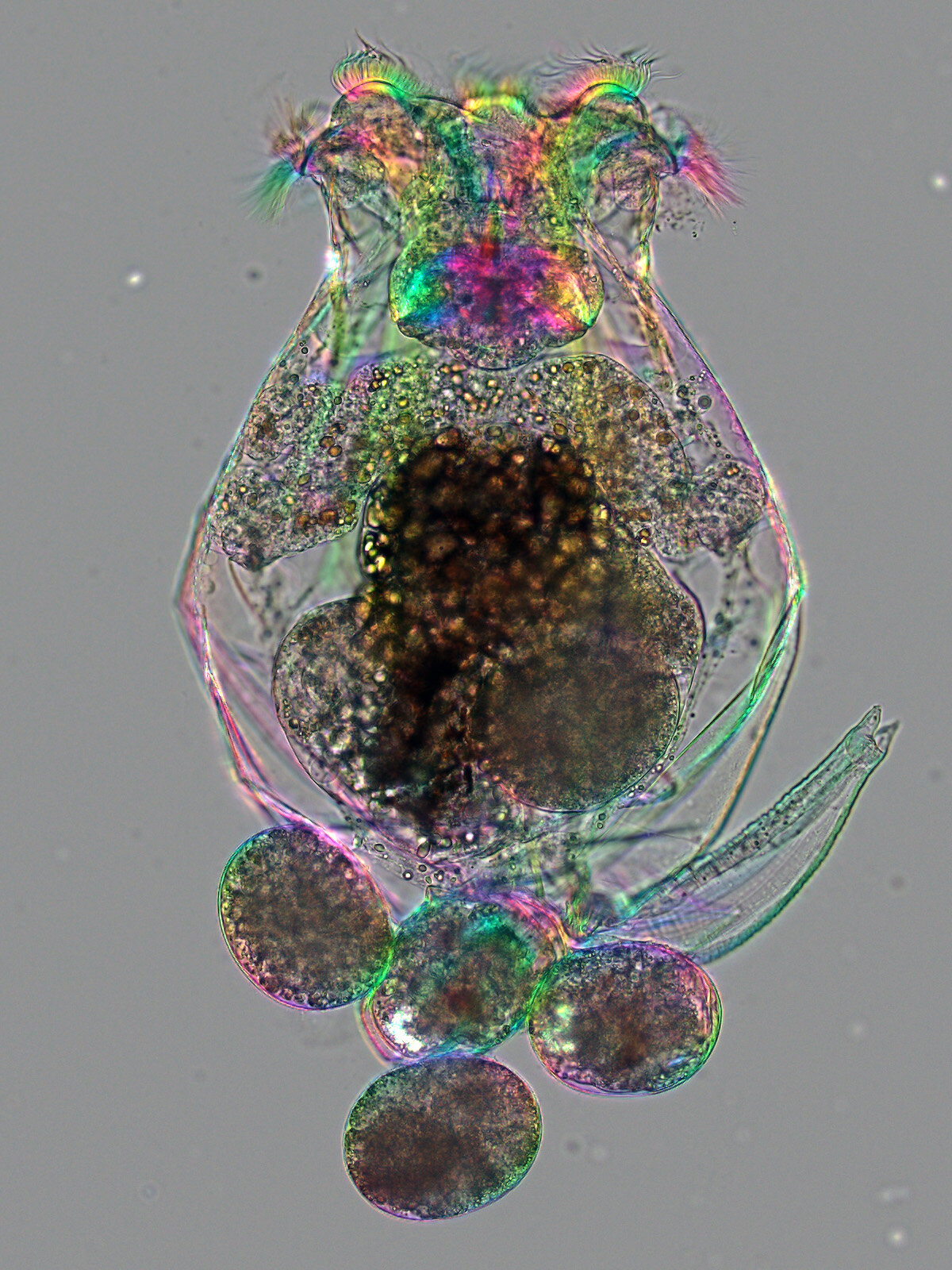Much about tiny, swimming rotifers makes them ideal study subjects. Although barely visible to the naked eye, these transparent animals and their innards are readily viewed under a microscope. What’s more, they grow readily in laboratory culture, offering scientists an otherwise difficult-to-obtain perspective from their corner of the animal kingdom.
However, while rotifers have been used experimentally for more than a century by many research groups, scientists have so far lacked the ability to readily manipulate rotifers’ genetics, placing a hard limit on the experiments they can run with these animals.
A joint effort by Kristin Gribble and David Mark Welch at the Marine Biological Laboratory (MBL) has overcome this challenge by devising a method for precisely altering the rotifers’ genomes using the gene editing system CRISPR-Cas9. In experiments described in PLOS Biology, their team edited two genes and added a genetic sequence to produce changes that the rotifers passed down through generations.
“Our method turns out to be a very practical way to generate a large number of genetically altered rotifers fairly quickly,” said Mark Welch, a senior scientist at MBL and director of the Josephine Bay Paul Center for Comparative Molecular Biology and Evolution.
Not only will this advance benefit his lab and Gribble’s, which use rotifers to study the biology of aging, DNA repair mechanisms, and other fundamental questions, it will “open the field to allow more people to work with these animals,” Mark Welch said.
2023-08-06 07:48:03
Original from phys.org
